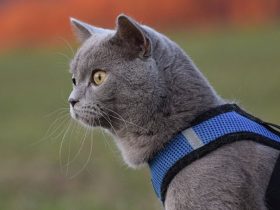BOXER PUPPIES AND DOGS
FAST FACTS
- Nickname:
- Breed Group: Working
- Height: 21-25 inches
- Weight: 55-70 lbs
- Life Span: 10-12 years
BOXER INFORMATION
BOXER BASICS
WHERE ARE BOXERS FROM?
Due to the crossbreeding of comparable Danzig area dogs and Belgian Bullenbeisser (Bull Biter) canines, boxers were created in Germany. The breed may have also been developed using English Bulldogs. In 1896, the first boxing club in Germany was established.
HOW MANY TYPES OF BOXERS ARE THERE?
German, American, and British boxers all exist. German Boxers have a somewhat more significant bone structure and smaller snout. American Boxers have a more form-fitting coat and no head creases.
WHICH BREEDS MIX WITH BOXERS?
- Boxador (Labrador + Boxer)
- Bulloxer (English Bulldog + Boxer)
- Boxita (Boxer + Akita)
- Boxweiler (Boxer + Rottweiler)
BOXER LIFESPAN
Boxers live about 10-12 years.
BOXER SIZE (HEIGHT & WEIGHT)
Most boxers weigh between 30 and 80 lbs. and are between 21 and 25 inches tall.
BOXER APPEARANCE
WHAT COLORS DO BOXERS COME IN?
Boxers are either fawn and white, fawn, brindle, and sometimes all-white.
HOW MUCH DO BOXERS SHED?
Boxers shed lightly to moderately, but nothing a weekly brushing won’t take care of.
DO YOU NEED TO GROOM A BOXER?
Boxers don’t need much care since their short, sleek coats are easy to maintain.
BOXER TEMPERAMENT, PERSONALITY & TRAINING
HOW MUCH DO BOXERS BARK?
Boxers are watchful guard dogs, but there is a tremendous variation in how each dog approaches this instinct. Generally speaking, they don’t have a reputation for being persistent or loud barkers, but each dog is unique. Nevertheless, you can teach any dog not to bark with the proper training and exercise.

ARE BOXERS GOOD AROUND CHILDREN?
Boxers are renowned for being exceptionally gentle with youngsters, despite their intimidating appearance and physique. Additionally, they have an activity level comparable to that of a 3-year-old, making them excellent playmates for children.
As with any dog, it is advised that your kid constantly be monitored when interacting with your Boxer since they are so excitable and assertive that they might not always be aware of their strength. This will ensure the safety of both the child and the dog.
ARE BOXERS SUITABLE FOR FAMILIES?
Boxers are highly spirited dogs who live by the mantra, “Boxers simply want to have fun,” and they make lovely pets for active, outdoorsy, and playful families. They are goofy, enjoy playing with toys, and enjoy hopping and bouncing. They develop deep bonds with their family as they are bred to be watchdogs.
ARE BOXERS GOOD WITH CATS?
Boxers are a prey-drive breed. Therefore you might notice that they like chasing cats while being highly energetic and good-natured. However, boxers often get along nicely with other animals. Although each dog has unique tastes and temperaments, you can be sure that your Boxer and cat will get along well if they are correctly socialised and introduced when they are young.
IS IT SIMPLE TO TRAIN BOXERS?
Boxers are clever yet obstinate, so early obedience training is crucial for this breed. They become tired quickly of repetitive directions. Therefore a patient trainer who understands how to preserve their outgoing, fun attention is necessary.
BOXER HEALTH
DO BOXERS HAVE A LOT OF HEALTH PROBLEMS?
Boxers have a shorter life expectancy than the average breed because the breed is more prone to specific health problems.
WHAT DISEASES ARE BOXERS PRONE TO?
- Hip or Elbow Dysplasia: Hip and elbow dysplasia are two dogs’ most prevalent skeletal disorders. Both conditions cause aberrant growth or malformed elbow or hip joints and are related disorders. The joints and sockets can’t effectively connect because of the irregular form, so they rub and grind instead of moving quickly. Although joint instability is the primary symptom of hip dysplasia, elbow dysplasia frequently results in bone or cartilage fragments coming free and irritating the joint tissues. Dysplasia-related rubbing can lead to several problems, including discomfort, lameness, and secondary osteoarthritis. If discovered before the beginning of arthritis, surgery can be performed to repair the joint. If you are rescuing a Boxer, have her examined by a veterinarian to see whether she has dysplasia or is susceptible to developing it. This will help you determine what kinds of activities and exercises she can endure.
- Dilated Cardiomyopathy: The cardiac disorder known as dilated cardiomyopathy is defined by the heart muscles’ failure to contract adequately, which eventually reduces the amount of blood pumped to the heart. Due to needing to work harder to pump blood, both heart chambers of a dog with cardiomyopathy expand. The additional strain frequently brings on congestive heart failure that limits blood flow placed on the heart (CHF). Lethargy, anorexia, fast breathing, shortness of breath, coughing, an enlarged belly, and momentary loss of consciousness are the main signs of DCM.
- Sub-Aortic Stenosis: Larger breed dogs are more likely to acquire the genetic heart problem known as sub-aortic stenosis present from birth. It happens when a fragile aortic valve, which regulates blood flow from the left ventricle to the aorta, is present at birth in a dog. Blood flow via the heart is hampered by constriction, resulting in dizziness and sudden death. Your veterinarian can spot it and recommend the right course of action.
- Boxer Cardiomyopathy: Arrhythmogenic right ventricular cardiomyopathy, also known as boxer cardiomyopathy, is a hereditary illness that develops when the healthy muscle tissue in the heart ventricle is replaced by fatty tissue. This disrupts the heart’s electrical circuitry and results in cardiac arrhythmia (irregular heartbeat). Arrhythmias can cause sudden death and fainting episodes; however, they won’t show any signs in moderate situations.
- Cancer: Mast cell tumours, immune system cancer, lymphomas, a class of malignancies that start in white blood cells, skin cancer, and brain tumours are all more likely to affect Boxers.
- Degenerative myelopathy: Degenerative myelopathy is a hereditary condition that slowly paralyses the legs in the back. There is no known treatment, and it can advance extremely fast.
- Others: Hypothyroidism, a thyroid disorder that results in inadequate hormone production and may cause obesity, low energy, and a brittle coat; gastric dilatation-volvulus, a rapid, painful, and potentially fatal swelling and twisting of the belly; and colitis, an inflammation of the large intestine. Additionally prone to deafness are all-white Boxers.

PURCHASING VS ADOPTING A BOXER
HOW MUCH DOES A BOXER COST?
A Boxer may be adopted for a lot less money than it would buy one from a breeder. For example, to cover the costs of caring for the dog before adoption, a Boxer adoption costs about $300. Contrarily, purchasing a Boxer from a breeder may be unaffordable. They often range in price from $700 to $2,000, depending on their breeding.
WHERE CAN I ADOPT A BOXER
A rescue specialising in Boxers would be the most straightforward place to find a home for a Boxer.
BOXER RESCUES AND SHELTERS
Boxer puppy adoption is a speciality of several animal shelters and rescue organisations.
WHAT BREEDERS OF BOXERS CAN I FIND?
Before purchasing a puppy from a breeder, we advise you to rescue a Boxer (or any other dog). In need of homes are the millions of purebred dogs who are homeless around the nation. In addition, the adopter and the adopted Boxer may experience significant life changes due to the adoption.
Getting a puppy from a reputed breeder is safer if you’re still unsure and want to buy a Boxer from a breeder. When working with a breeder, be sure that the breeder you’re buying from genetically tests their animals. You should also double-check the puppy’s health records. Finally, ensure the breeder will return any animals they sell if they cannot keep them in their home for whatever reason. Confirm they are dedicated to finding those animals’ new homes if necessary.






